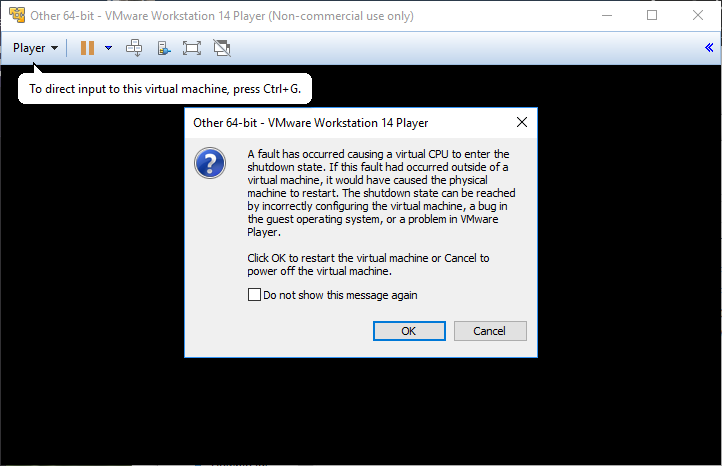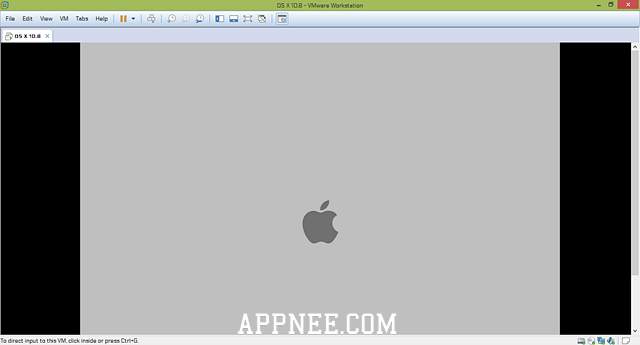- Mac Os For Vmware Workstation
- Download Mac Os For Vm
- Mac Os Vmware Iso
- Mac Os 64 Bit Iso For Vm Workstation Download
After installing Mac OS X Mojave on a virtual machine, straight away you will notice that you are not able to get a full resolution for Mac OS inside the virtual machine. Even though you toggle the VM to full screen.
One will also notice a drastic lag in the performance of the overall Mac OS inside the virtual machine.
The Ubuntu machine is a popular Linux based operating system used by many. There are some enterprise users as well who use this as the primary operating system. So let’s take a look at how you can install Ubuntu using VMware workstation in windows 10. Creation of the VM; Attach the Ubuntu ISO image to Workstation.
- Kali Linux 64-bit VMware: Available on the Offensive Security VM Download Page: Kali Linux 32-bit (PAE) VMware: Available on the Offensive Security VM Download Page: Kali Linux 64-bit VirtualBox. We now generate weekly Kali images so you can always get a fresh ISO whenever you need it.
- This virtual machine is configured for 64-bit guest operating systems. However, 64-bit operation is not possible. I tried to install same ESX iso through fusion on my Mac OS and result was successful so I think my CPU support VT-x!!
Though the reasons for this lag, and a bit slower system can be a low configuration system on itself. But despite having a high-end configuration, if you are facing these kinds of issues you can look into the below-mentioned measures to actually solve them.
Some of the issues solved by this fix:
- You can use MAC OS X Mojave in full resolution in VMware / virtual machine.
- Display lags are fixed.
- Overall faster-performing system

How To Speed Up Mac OS X Mojave In Vmware/Virtualbox
First : Beamoff
2020 Update: Unfortunately, Beamoff does not seem to work on mac os mojave. But the new edition of VMware tools seem to solve this issue for most of the users.
Beamoff is a free script developed by the Hackintosh community and experts that fix internal issues with the system. This eventually results in a much smoother performing system and application on MAC OS.
- Extract it to the Mac OS’s home screen.
- Go to system preferences > Security & Privacy > Allow apps downloaded from :
- You should not be able to alter the selections yet.
- Click on the yellow lock on the bottom left of the screen, and then enter your password.
- Alter the settings to “Anywhere”.
- Click on the lock again to lock it.
- You should see the much-improved performance of the system.
Second : Vmware Tools
Remember the unlocker we used while installing Mac OS X on our virtual machine, we will need that unlocker again.
The link to download the unlocker : https://bit.ly/2Xk9REr
- Shutdown your virtual machine.
- Edit virtual machine settings and open up CD/DVD(SATA).
- Under “Connection” select “Use ISO image file.
- Click on “Browse” and navigate to the “UNLOCKER FOLDER/tools/ Darwin.iso
- Select the Darwin.iso file.
- Now power on the virtual machine.
- You should straight away see the installation screen for VMware tools.
- Double click on “Install VMware Tools” and click on “Continue”
- Install > Continue Installation and enter your login password
- Once the installation has completed, click on the restart to restart the system
- You might be prompted to open the security preferences to allow the VMware tools, do that
- Now your system will be less laggy and the Mojave will run on fullscreen
- To confirm the tools are installed, click on the “apple” icon on the top left corner of the screen and ” About this mac”
- You should see that the graphics is 128 MB and not just 3 MB
It’s plain and simple to get the tools installed. After you’ve installed the tools, just make sure you restart your system.
So that’s how you can optimize mac os Mojave ‘s performance in vmware workstation player and run mac os in full screen mode.
Noticed any differences with your system yet?? Let us know!!!
Many Windows users would also like to try Mac OS X operating system that runs on Apple computers. There are some ways how to do it, but in our opinion, the easiest one is to install OS X in some virtualization software, like VMware Workstation.
By default, VMware Workstation doesn't officially support virtualization of Mac OS X. However, other third party developers created unofficial update that adds Mac OS X profiles to VMware settings, which allows users to install Mac OS X without Chromeleon, or other Apple Mac boot emulators.
How to run Mac OS X in VMware Workstation
We have tried to run last version of Mac OS X (Mountain Lion - build 10.8.) in VMware Workstation.
Other system requirements to run virtualized Mac OS X are:
Intel dual core processor with Intel VT-x hardware virtualization, 2GB RAM, 15GB free HDD space, NVIDIA, or ATI GPU.
Step 1 - Download and install VMware Workstation

VMware Workstation is commercial software, but you can try fully functional time limited demo version which is available on the official VMware website. It is recommended to download and install Workstation version 8.
Step 2 - Download Mac OS X installation image
We have tried already prepared Mac OS X Mountain Lion virtual machine created by Soul Dev Team. The archive (OS X Mountain Lion 10.8 Retail VMware Image) contains virtual machine with pre-installed Mac OS X and other utilities to customize VMware Workstation. Download it from Soul Dev Team website and unpack archive to your hard drive.
Step 3 - Customize VMware Workstation
Open the archive and go to the VMware Workstation Unlocker - Windows subfolder.
In our case:
C:UsersPublicDocumentsShared Virtual MachinesOS X 10.8 Mountain Lion Retail VMware ImageVMware Unlocker - Mac OS X GuestVMware 8.x SeriesVMware Workstation Unlocker - Windows
Click the right mouse button on install.cmd script and selectRun as Administrator option. Wait until the patch process is finished.
Mac Os For Vmware Workstation
There is an utility available in the archive called Hardware Virtualization Bypasser that allows users without processor with VT-x virtualization, run Mac OS X in VMware. However we tested it on older Pentium D 945 system without success.
Step 4 - Run the Mac OS X in VMware Workstation
StartVMware Workstation. Click onFile menu > Open... Navigate to the unpacked Mac OS X archive to OS X 10.8 Mountain Lion subfolder and selectOS X 10.8 Mountain Lion.vmx file.
VMware Worksation with imported Mac OS X virtual machine
Click on VM menu > Settings... (also can use Alt+D shortcut). Click on Options tab and check the Guest operating system is set to Apple Mac OS X and Version to Mac OS X 10.7. 64-bit.


VMware Workstation General settings for Mac OS X
Click on Hardware tab. Set the memory settings to one half of RAM installed in computer. In Processors settings set the number of processors and cores per processor (mostly one processor and two, four or eight cores). These settings greatly affect the virtual machine performance. Now click on OK button.
VMware Workstation Hardware settings for Mac OS X
Click on Power on this virtual machine option (also Ctrl+B shortcut). After few seconds you will se a warning window.
Download Mac Os For Vm
VMware Workstation warning window
Click on I copied it button and wait until the Mac OS X boot up to Welcome wizard, where you can set up your virtual Apple Mac computer (keyboard settings, localization, time settings, Apple ID, User account etc.).
VMware Workstation Mac OS X setup
Step 5 - Install VMware Tools
After you have set up the system, it is time to install VMware Tools, which will improve performance of the system and allow you to set monitor resolution higher than 1024x768.
Click on VM option in upper menu → Settings... → CD/DVD (IDE) option → Use ISO image file option and after that on Browse... button. Navigate to Mac OS X unpacked archive to Tools subfolder and select darwin.iso disk image.
In our case:
C:UsersPublicDocumentsShared Virtual MachinesOS X 10.8 Mountain Lion Retail VMware ImageVMware Unlocker - Mac OS X GuestVMware 8.x SeriesTools
VMware Workstation CD/DVD settings for Mac OS X
VMware Tools installation will be opened in the system. Double click on Install VMware Tools and install them to system. After the installation is finished restart the virtual computer (Click on Apple logo in upper left corner > Restart...).
Mac Os Vmware Iso
VMware Workstation VMware Tools installation in Mac OS X
Mac Os 64 Bit Iso For Vm Workstation Download
And that's it! Your virtual Apple Mac computer is prepared to use and you can start using and testing all Mac OS X apps.
